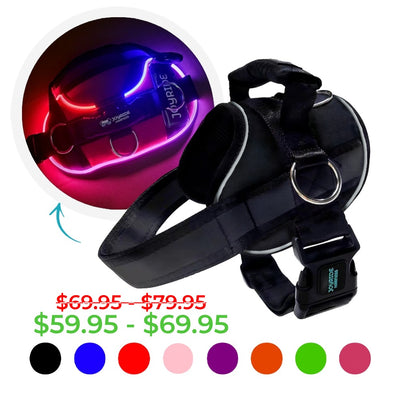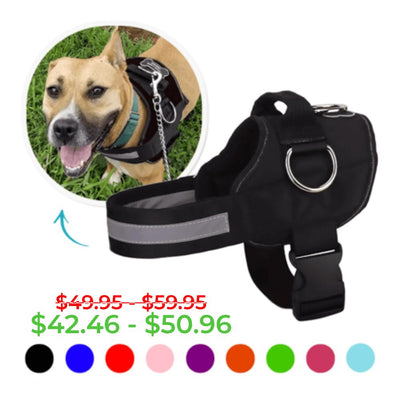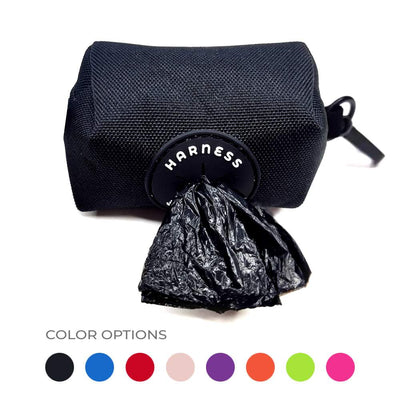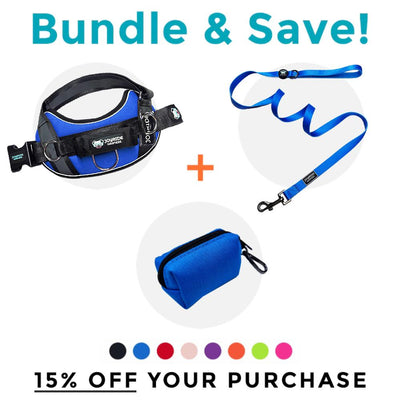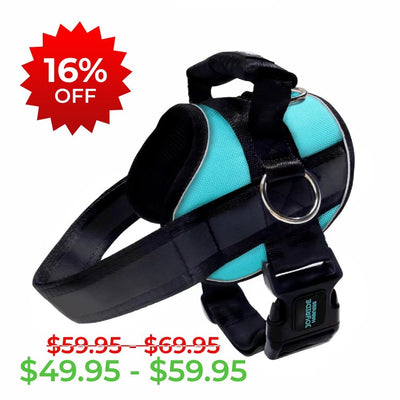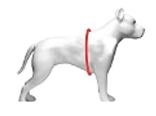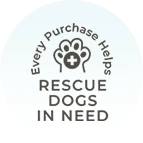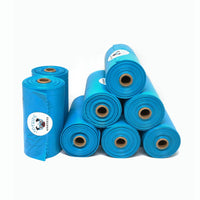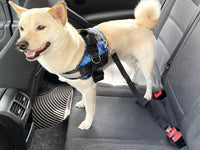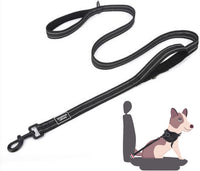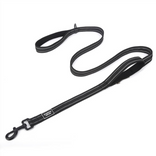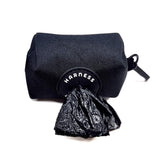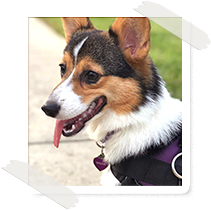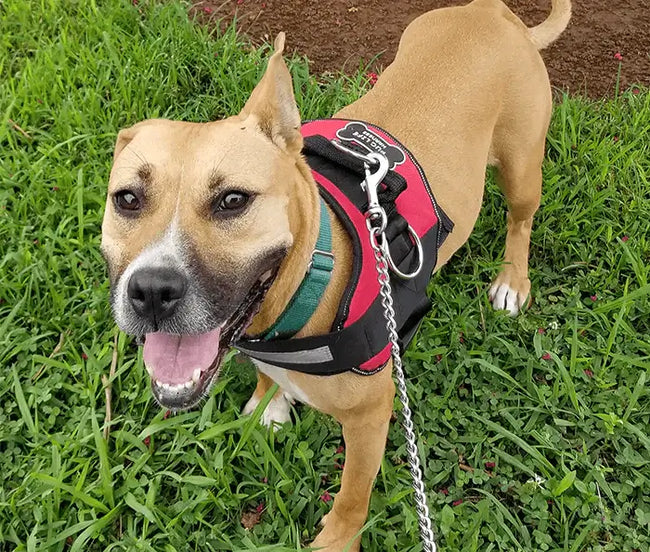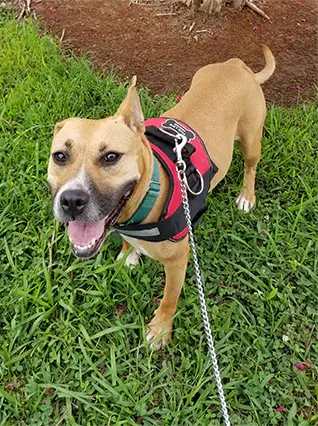How To Tend To Dog Wounds at Home

If your dog has been injured, you can equip yourself with the knowledge and resources to help your pup at home.
Some pet injuries are minor and don’t require immediate treatment from a medical professional. But, even with those that have been treated by a veterinarian, you need to know how to be able to care for the wound when you bring your pup home.
Even if it’s just a minor cut, you should deal with it promptly to prevent the chance of infection.
Here’s what you can do to clean and tend a dog’s wound(s) at home.
Get a Pet First Aid Kit

The first step in treatment is being prepared. When your dog is injured and you’re worried, the last thing you want is to be looking for items – rummaging through what you already have or, even worse, having to go out to buy what you need.
You can purchase or make your own pet first aid kit by following the American Veterinary Medical Association's list of pet first aid supplies. To treat a wound, you will need to have the following:
- Sterile bandages
- Adhesive tape for bandages (do NOT use human adhesive bandages on pets)
- Digital Thermometer
- Milk of magnesia or activated charcoal
- Cleansing solution suitable for pets
- Antibacterial ointment
- Bandage scissors
- Elastic wrapping
- Gauze
- Harness and/or leash
- Non Stick bandages, towels, or strips of clean cloth
- Eyedropper (or large syringe without needle)
- Hydrogen peroxide (3%)
- Tweezers
- Spray bottle
- Clean towels or rags
Important Numbers and Information to Be Aware Of
If things escalate, you’ll want to have the below information on hand:
- Emergency veterinary clinic: Go to the Veterinary Emergency and Critical Care Society Website for a searchable list of emergency clinics by state or visit MyVeterinarian.com, enter the zip code, and check the “emergency” box to get a listing of emergency providers in the area.
- General record information: Your pet's medical record (including medications and vaccination history).
- Animal Poison Control Center: 888-4ANI-HELP (888-426-4435). There may be a fee for this call.
Treating Minor Dog Wounds at Home
Before you begin, have someone to help you restrain your pet or consider a muzzle. Even if your pet has never been aggressive, pain can cause a pet to react differently. Having a plan to keep your pet stable and calm while you treat the wound will prevent additional injury to the dog or even you.
- Stop the bleeding: If the wound is bleeding, put a clean towel or cloth over the wound and apply light pressure.
- Clean the wound: Puncture wounds, such as a bite, can appear minor, but they are not. Bite wounds contain bacteria that can cause infection. Use a water bottle filled with clean water and spray on the wound to clean out any debris, dirt, or other unwanted particles.
- Helpful tip: Avoid soaps, shampoos, rubbing alcohol, herbal preparations, tea tree oil, or any other product to clean an open wound, unless specifically instructed to do so by your veterinarian. Some also recommend that you do not use hydrogen peroxide.
- Remove foreign objects: If there are things like glass or twigs in the wound, remove them with tweezers. Use a magnifying glass to make sure you’ve removed everything.
- Disinfect the wound: Using a cleanser such as diluted betadine or chlorhexidine, gently clean the injured area. Do not use rubbing alcohol or hydrogen peroxide as these can damage the tissue and delay healing.
- Cover the wound with a bandage: Apply a small amount of antibacterial ointment and cover the wound with a piece of sterile gauze or bandage. Use elastic tape to hold the bandage in place.
- Protective collar: Pets don’t understand why they shouldn’t bite or lick at a bandage. Consider using an E-collar (aka cone of shame) to protect the wound site to keep them from preventing the healing process.
All done! Reward your pet for being a brave pup with a small treat.
Checking on the Wound
Take care to remove the old bandage after 24 hours and replace it with a new one.
Monitor how your pet’s wound is healing. If you notice additional bleeding or changes to the color of the wound, swelling, or discharge, contact a vet immediately.
Treating Major Dog Wounds
When to Take Your Dog to the Vet
Some types of injuries require prompt veterinary attention and should not be treated at home. If your dog has any of the following injuries, you should call your vet immediately.
- Penetrating wounds such as a deep laceration or bite wound where the skin has been fully punctured.
- Wounds that involve sensitive or large portions of the body.
- A wound that is inflamed and showing pus.
- A wound that is bleeding profusely or hasn’t stopped bleeding after 10 minutes.
- Burns.
- When there is an object, like broken glass, in the wound.
- If a minor cut or graze isn’t healing quickly or appears to be infected.
- If a dog’s paw or joint appears bruised and swollen.
After Care: How Will I Need to Care for the Wound?
When your pet is discharged from the hospital, you receive specific instructions regarding your pet's home care. Some general care guidelines to follow are:
- Administer all of the medications as prescribed. Do not discontinue antibiotics for any reason unless you have been specifically instructed to do so by your veterinarian.
- Keep the wound edges clean to reduce the potential for re-infection and allow new healthy tissue to develop.
- Your dog should not be allowed to lick or chew the open wound. The best way to ensure this, especially when you aren’t nearby, is an E-collar.
- Prevent the skin from healing over the wound too quickly. This is particularly important with abscesses that have been lanced and drained surgically. If the wound closes prematurely, the wound may come back.
What Pain Medications Can I Give My Dog?
Your veterinarian will prescribe appropriate medications to relieve pain and discomfort. Your veterinarian will assess the individual situation and determine the most appropriate medications for your dog.
Pain medications most typically prescribed are non-steroidal anti-inflammatory drugs (NSAIDs) such as meloxicam (Rheumocam, Metacam®), deracoxib (Deramaxx®), or carprofen (Rimadyl®).
Make Your Dog Comfortable To and From the Vet
Dogs just know when they’re going to the vet. If they’re injured, they’re already under stress. Make them as comfortable as possible with one of our harnesses.
Harnesses are secure and are better to prevent an injury than just a collar.
Keep them even safer with our 2-in-1 dog leash/seatbelt combo.
For more doggie photos and pup-related fun, follow us on Instagram at @joyrideharness. And for a more detailed blog post about finding the best size dog harness for your pup, check out this blog post!
